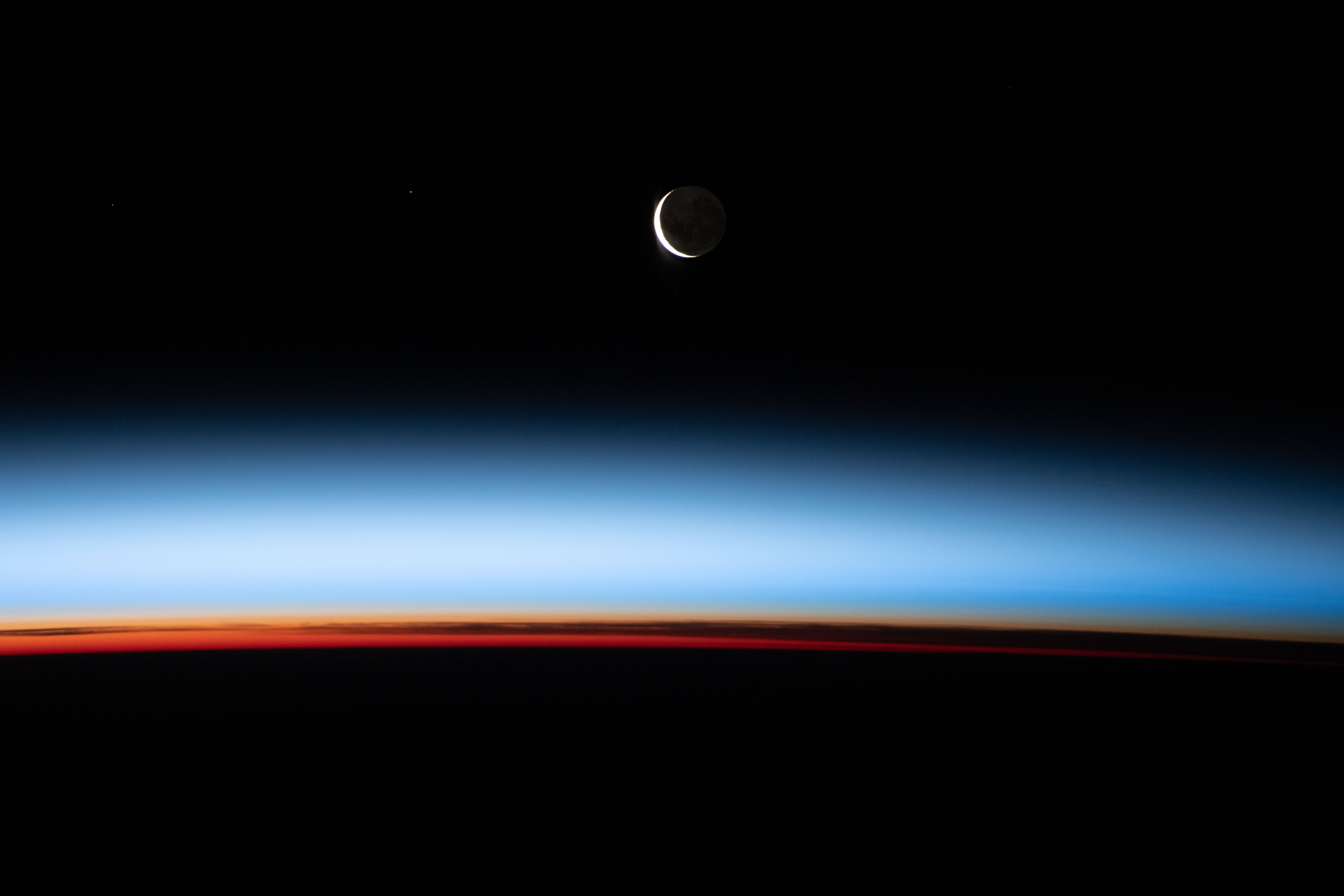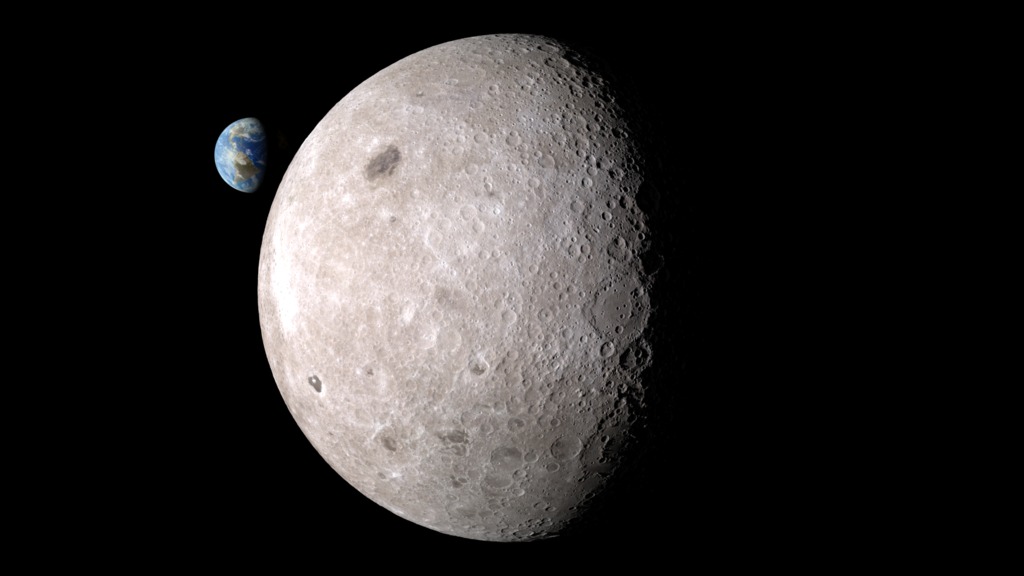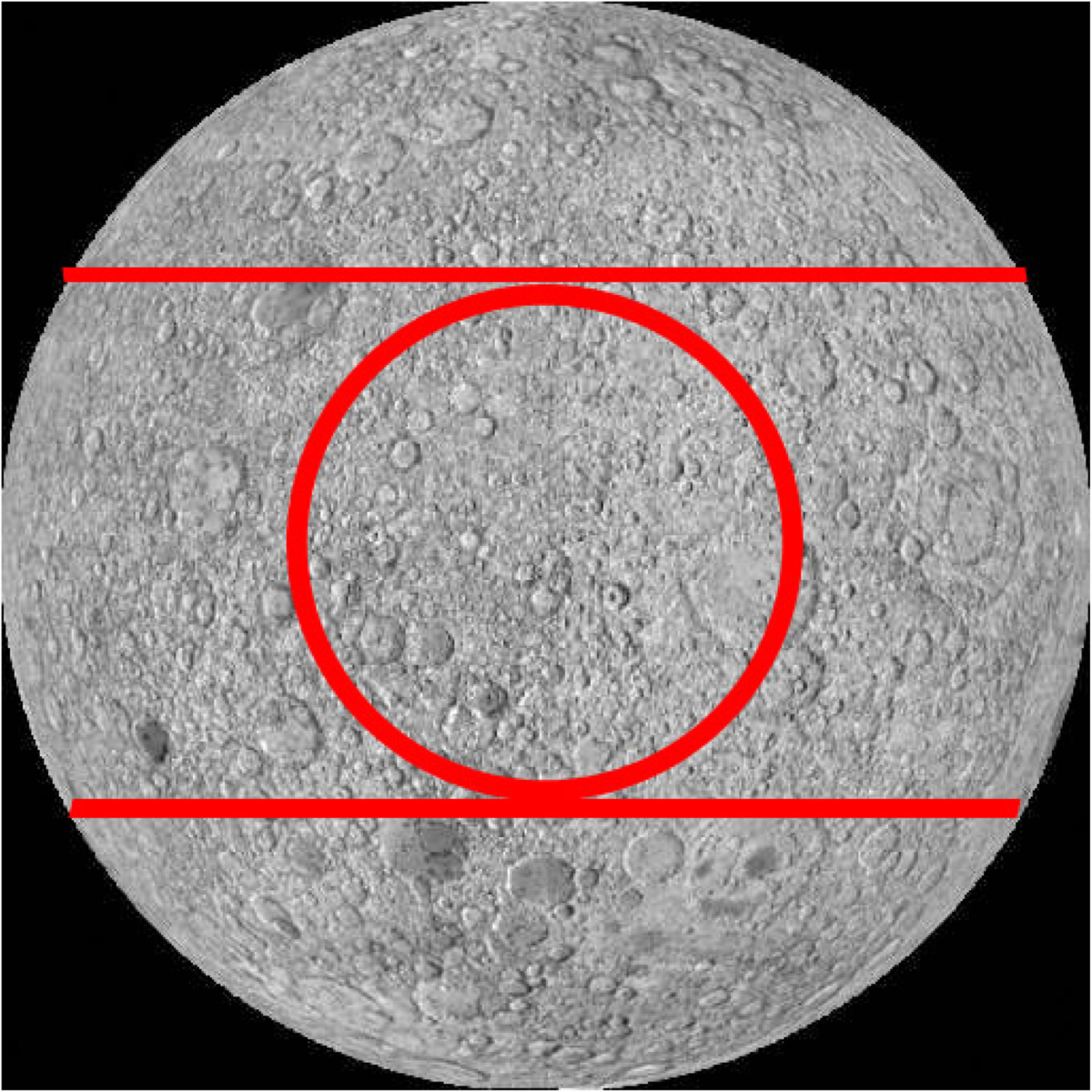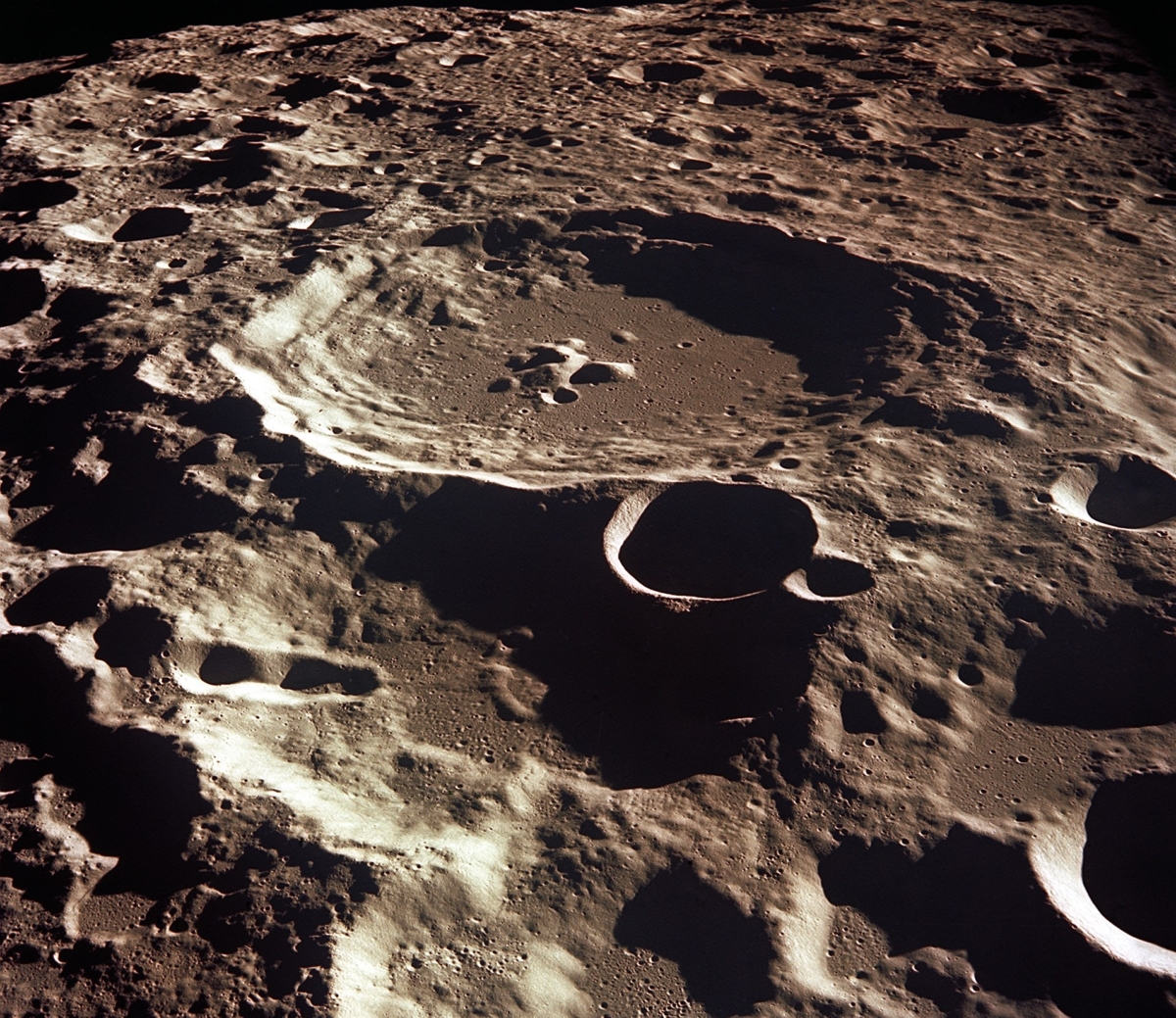Moon group pushes for protection of ultraquiet lunar far side
The far side is a great place for radio telescopes, astronomers say.

The international scientific community has long been discussing the need to keep the far side of the moon free from human-made radio frequency intrusion.
Doing so can make possible observations of the unexplored early epochs of the universe known as the dark ages and cosmic dawn, scientists say.
The moon's far side always faces away from Earth. Consequently it is "radio-quiet," shielded by the moon itself from radio-frequency interference (RFI) that's pumped out by powerful Earth-based transmitters.
Moreover, the moon also lacks a substantial ionosphere, whereas Earth's ionosphere absorbs and refracts cosmic radio sources. Also, the lunar environment is dry and stable, leading to steadier and ultra-sensitive radio observations — like cupping an ear to listen for chatter from alien civilizations.
A newly established group called the Moon Farside Protection Permanent Committee, which is part of the International Academy of Astronautics (IAA), has begun to frame issues and solutions to guard against RFI corruption of the moon's far side.
How the moon formed: 5 wild lunar theories

Circular region
The new committee is chaired by Claudio Maccone, an Italian SETI (search for extraterrestrial intelligence) astronomer, space scientist and mathematician.
Get the Space.com Newsletter
Breaking space news, the latest updates on rocket launches, skywatching events and more!
Maccone supports creation of a Protected Antipode Circle or PAC, a large circular piece of lunar landscape about 1,130 miles (1,820 kilometers) wide that would become the most shielded area of the moon's far side.
"PAC does not overlap with other areas of interest to human activity," he said. "PAC is the only area of the far side that will never be reached by the radiation emitted by future space bases located at the L4 and L5 Lagrangian points of the Earth-moon system."
In view of these unique features, Maccone believes the PAC should be officially recognized by the United Nations as an international protected area, where radio contamination by humans is curbed, now and into the future.

Blinder and blinder
Maccone has advanced the center of the moon's far side, specifically Daedalus Crater, as a perfect spot to set up a future radio telescope, or phased array, to detect radio waves of all kinds that are impossible to detect on Earth because of ever-growing RFI. Daedalus has a high rim, ideal for blocking radiation that could come in from other sites on the far side, he said.
"The far side of the moon is a unique place for us in the whole universe. It is close to the Earth but protected from the radio garbage that we ourselves are creating in an ever increasing amount that is making our radio telescopes blinder and blinder," Maccone said. "The far side cannot be left in the realtors' hands! Some agreement is needed for the benefit of all humankind."
The new IAA committee has attracted interest around the world. For example, Maccone told Space.com that several Chinese scholars have advised him that they would like to join the committee and contribute.

Window to the cosmos
Jack Burns co-chairs the new committee. He's a professor of astrophysics and physics at the University of Colorado, Boulder who's helping define NASA's new missions to the moon, including potential low-frequency astrophysics projects that may be set up on the moon's far side.
"We need to start getting serious about radio pollution on the moon," Burns said. "The lunar far side is the only truly radio-quiet zone in the inner solar system."
Radio telescopes and arrays of antennas on the far side surface will open a window to the cosmos at frequencies below 50 megahertz, Burns said. That's a wavelength band inaccessible from Earth both because of RFI and because the Earth's ionosphere refracts, reflects, and absorbs radio waves at these frequencies.
Radio telescopes and commercial development of the moon can coexist, Burns said.
"Most of the radio pollution at these frequencies comes from leakage by power supplies, computers and other electronics," he said. "Communications are at much higher frequencies and are less of a problem if they stay within allocated bands. Electronics can be simply shielded by placing them inside Faraday cages — chicken wire fencing — to reduce the radio leakage. We just need to plan ahead. That's what our IAA group is looking to do."
Living on the moon: What it would be like (infographic)
Anthropogenic noise
A number of new ideas about how to take advantage of the lunar far side's exceptional qualities have come to the forefront.
For example, Houston-based company Lunar Resources is leading FarView, an appraisal of a possible lunar far side radio observatory that has received funding from the NASA Innovative Advanced Concepts (NIAC) program.
FarView would study the cosmic dark ages in detail, and the lunar far side is the only place in the inner solar system where such work can feasibly be done, said Ronald Polidan, principal investigator of FarView and director of programs at Lunar Resources.
FarView would be so sensitive that the lunar-situated observatory could easily detect a radio station broadcasting from Pluto in about a minute. Polidan thinks it could even be able to detect transmissions from a cell phone on Pluto.
Guidelines wanted
All that said, Polidan said researchers are very concerned about contamination of the currently pristine and very quiet lunar far side with signals from lunar-based anthropogenic sources.
"Sadly for us, most electronics will emit in our science band unless they are carefully shielded. Our dark ages signal is already weaker than the signals from the galactic foreground, the sun and even Jupiter radio emissions, so adding in more noise from lunar-orbiting spacecraft would be devastating," Polidan said.
If we lose the lunar far side to anthropogenic noise because we did not think ahead, Polidan said, "it will preclude humanity from observing how the first structures in the universe formed for decades."
What's needed now, Polidan concluded, is establishing guidelines for preserving this precious radio-quiet location on Earth's moon.
Leonard David is author of "Moon Rush: The New Space Race" (National Geographic, 2019). A longtime writer for Space.com, David has been reporting on the space industry for more than five decades. Follow us on Twitter @Spacedotcom or on Facebook.
Join our Space Forums to keep talking space on the latest missions, night sky and more! And if you have a news tip, correction or comment, let us know at: community@space.com.

Leonard David is an award-winning space journalist who has been reporting on space activities for more than 50 years. Currently writing as Space.com's Space Insider Columnist among his other projects, Leonard has authored numerous books on space exploration, Mars missions and more, with his latest being "Moon Rush: The New Space Race" published in 2019 by National Geographic. He also wrote "Mars: Our Future on the Red Planet" released in 2016 by National Geographic. Leonard has served as a correspondent for SpaceNews, Scientific American and Aerospace America for the AIAA. He has received many awards, including the first Ordway Award for Sustained Excellence in Spaceflight History in 2015 at the AAS Wernher von Braun Memorial Symposium. You can find out Leonard's latest project at his website and on Twitter.









